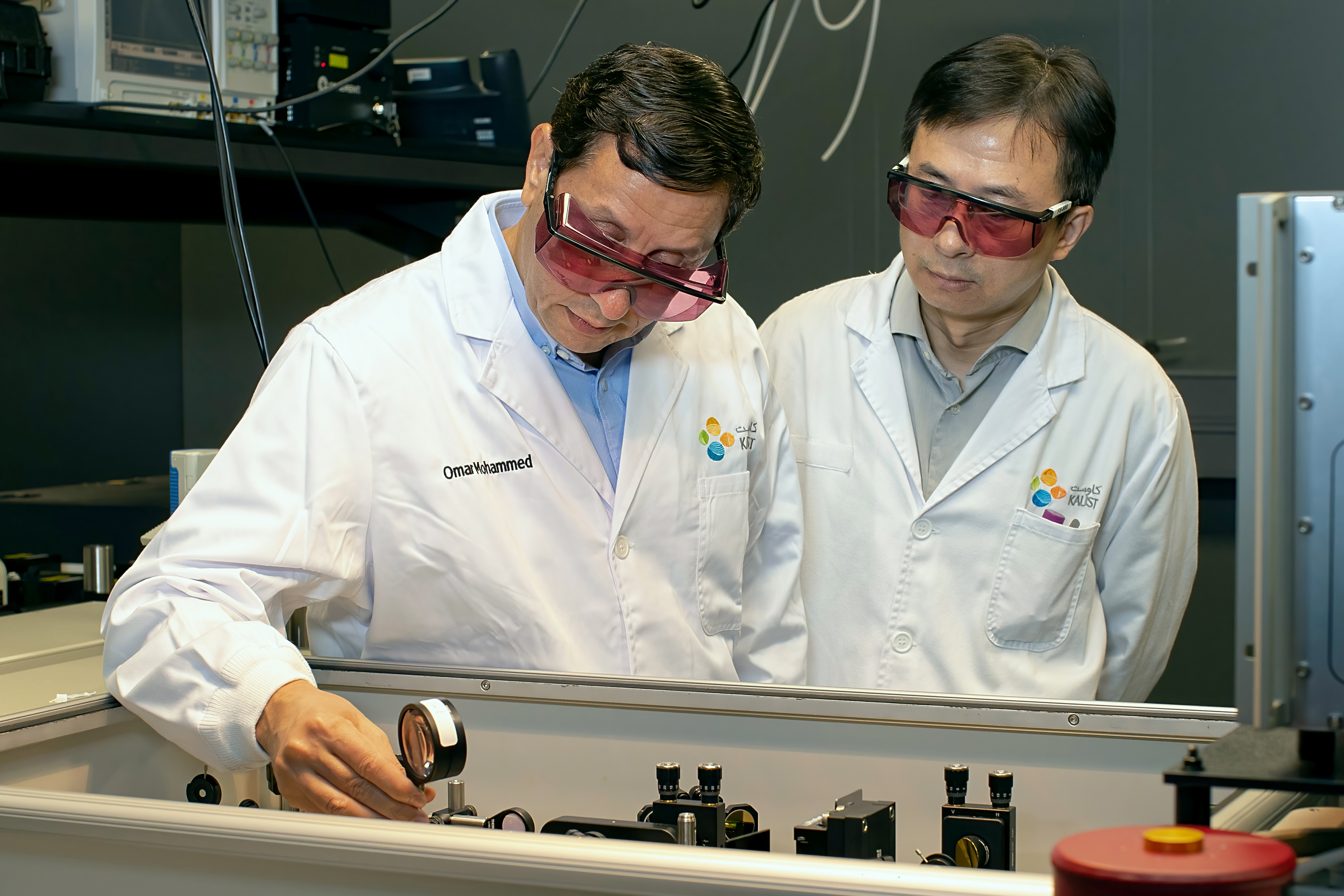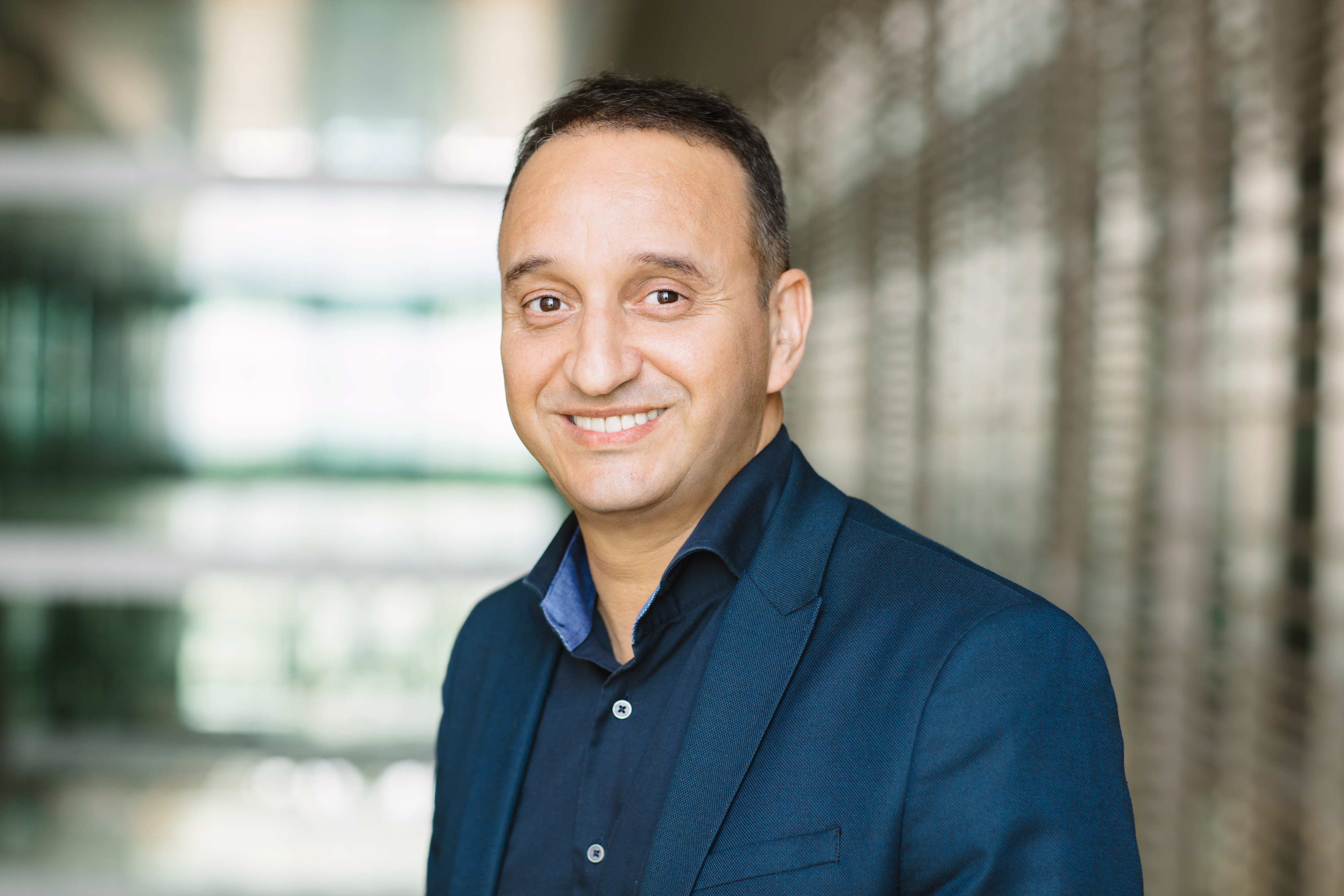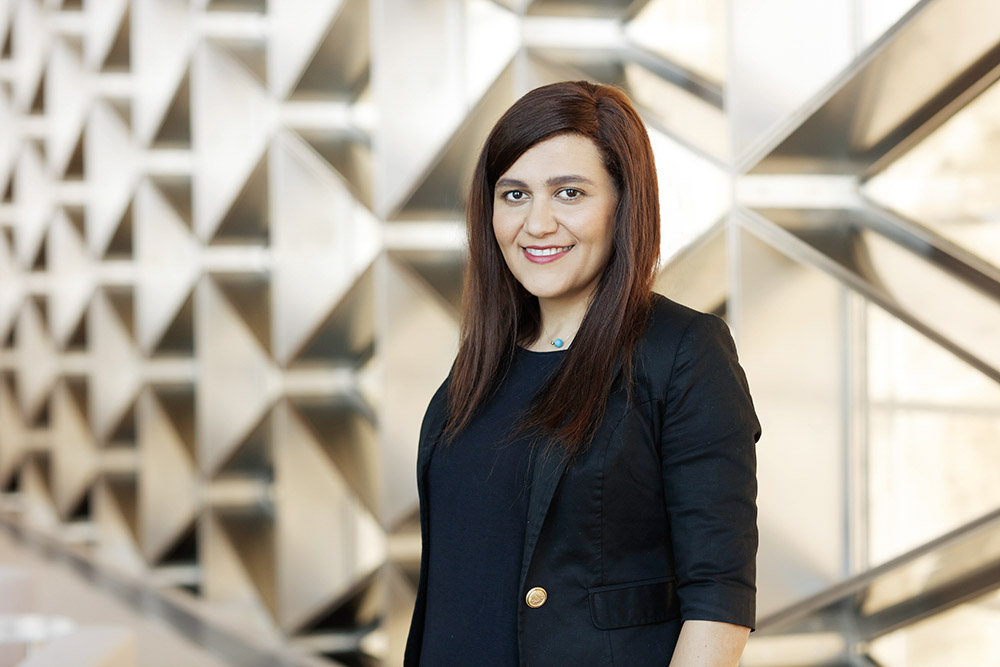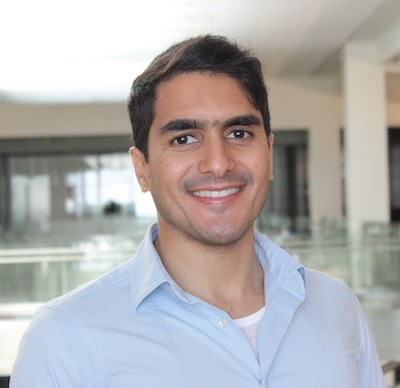Royal Society of Chemistry elects KAUST professors to its ranks

Professors Omar F. Mohammed and Yu Han examine samples in Mohammed's lab. Photo credit: KAUST
The Royal Society of Chemistry elected five KAUST professors as new Fellows into its organization for the 2020-2021 appointment cycle. KAUST professors Mohamed Eddaoudi, Omar F. Mohammed, Nivine Khashab, Osman Bakr and Yu Han are recognized for outstanding, ground-breaking work in their fields.
Mohamed Eddaoudi: metal organic frameworks
Distinguished Professor of Chemistry Dr.
Mohamed Eddaoudi, director of the Advanced Membranes and Porous Materials (AMPM) Center, is committed to developing new functional porous materials to address some of today's challenges. The new materials are designed and created to help reduce and mitigate the emissions of carbon dioxide and make energy-intensive separation processes more energy-efficient.

Profile of Mohamed Eddaoudi, Distinguished Professor, Chemical Science and Director, Advanced Membranes and Porous Materials Research Center
Eddaoudi has always been fascinated by materials synthesis and their deployments. He was a key contributor to the introduction of a new era of chemistry in the late 1990s called reticular chemistry (the chemistry of linking molecular blocks by strong bonds to make crystalline open frameworks, or nets). He is a pioneer in the synthesis of metal organic frameworks (MOFs). His key contribution to MOF chemistry — strategies for the design of MOF materials that benefit society — is evidenced by his listings in the last eight years as a highly cited chemist.
"When we make these novel functional materials we aim to tackle various applications pertaining to energy and environmental sustainability," said Eddaoudi. "For example, with our materials we are addressing various energy-intensive separations, such as separating petrochemical commodities in an energy-efficient manner."
Eddaoudi is developing fine-tuned MOF materials for carbon capture as part of the circular carbon economy agenda. He recently succeeded in creating a unique material, KAUST-7, that can capture carbon dioxide directly from the air. KAUST-7 has been selected by the national program in Saudi Arabia to be deployed for direct air capture (DAC).
"We have been working on developing MOF materials for carbon capture since the inception of KAUST, and we have succeeded in creating KAUST-7 as the best of its kind to capture carbon dioxide from air," he said. "We are working with Aramco and a third party company to deploy it in large scale."
Eddaoudi is excited by his work given its potential impact on society.
"When you make these materials, you are working on real world challenges including reducing energy use for separation, and also making carbon capture cost-effective," he said. "It's excellent for KAUST to be part of this transformation that exists in the Kingdom to reduce the carbon dioxide emissions."
Omar F. Mohammed: charge carrier dynamics
The research group of Dr. Omar F. Mohammed, associate professor of materials science and engineering, is interested in understanding charge carrier dynamics at the surfaces and interfaces of photoactive materials commonly used in optoelectronic devices.
"Our group is exploring how light and surface morphology affect the ultrafast charge carrier dynamics at the interface between absorber materials and carrier transporting layers," he said, "We are uncovering the key materials design parameters that govern charge transfer process and, ultimately, the performance and efficiency of the light harvesting devices."
Mohammed, in collaboration with Dr. Osman Bakr, has proposed new approaches to modify the surface of solar cells' absorber layer. Along with state-of-the-art charge carrier characterizations to promote electron transport and extraction, this enables the achievement of world-record cells based on perovskite single crystals.
Mohammed built the first generation of four-dimensional (4D) imaging in scanning mode at the California Institute of Technology (Caltech) with his mentor Professor Zewail. Mohammed and his research group went on to build the second generation at KAUST. His group has recently developed a low-voltage 4D imaging approach with unprecedented surface sensitivity. This opens a wide range of applications, including photo-catalysis and solar cells, to being elucidated at the smallest scales simultaneously in real space and real time.
Such an invention projects KAUST as an innovative hub for developing electron imaging technologies, and not merely a consumer of high-end equipment.
As for the future direction of solar research, Mohammed says his team is creating new directions for semiconductor composite materials to be used for UV light detections, anti-counterfeit applications and X-ray imaging scintillators, which has significant scientific and real-life technological implications ranging from medical radiography to security.
Nivine Khashab: supramolecular chemistry
Dr.
Nivine Khashab is an organic chemist specializing in supramolecular chemistry. Her group focuses on the design and synthesis of smart materials that mimic natural designs.

Profile of Professor, Chemical Science Nivine Khashab
"We need to capitalize on innovative delivery techniques rather than making new drugs," she said
One of the main highlights of Khashab's career is her work on the targeted delivery of CRISPR-Cas9 gene editing technology, which is a new and promising gene editing technology that can revolutionize the treatment of genetic diseases. Khashab and her team effectively encapsulated CRISPR-Cas9 and showed that they can deliver it safely inside of mice.
Regarding future research directions she said, "We will continue to focus on gene editing and immunotherapy in collaboration with our colleagues in data science as this is the future of personalized or precision medicine."
Her work on drug delivery systems has won her the L'Oréal-UNESCO for Women in Science Award in the field of physical science in 2017, in addition to other prestigious recognitions throughout her career.
Osman Bakr: functional nanomaterials
A Saudi Arabian native and MIT and Harvard graduate, Dr. Osman Bakr is a professor of material science and engineering. His lab researches functional nanomaterials.
"We work on hybrid organic and inorganic materials, and look at how they assemble," he said. "We try to design them so that they will be useful in renewable energy applications, such as solar cells and also opto-electronics like light emitting diodes and sensors, and any application where there is interesting interaction between matter and light."

Profile of Dr. Osman Bakr, KAUST professor of material science and engineering. Photo credit: KAUST
Bakr's major contribution of work for the last eight years has been in the area of metal halide perovskites, a class of materials that has inorganic and organic components.
"Recently these compounds have been shown to be excellent materials for solar cells, photo detectors and light emitting diodes," he said. "What makes them special is that they are versatile semiconductors that can also be processed at low temperatures."
Normally, high-performance semiconductors need to be purified at very high temperatures under very stringent conditions.
"Perovskites are different. They are materials that we can synthesize in a normal chemistry lab. They give us excellent devices so they will substantially lower the cost of sensors or solar cells, opening many applications. My lab's contribution to this field of research is in the development of single crystal perovskites and nanocrystal perovskites, as well as their devices."
As for the future, Bakr is looking forward to advancing perovskite technology to address challenges in consumer electronics and green energy.
Crucial to this has been the support of the Innovation Fund at KAUST. "KAUST Innovation Fund has provided funding support to commercialize some of the ideas and technologies coming out of our lab."
Yu Han: nanoporous materials
Dr. Yu Han, professor of chemical science, focuses his work on nanoporous and nanostructured materials to be used in energy and environment-related applications, including gas absorption and separation, water capture and catalysis.
Han has distinguished himself with the creation of low dose transmission electromicroscopy (low dose TEM), an imaging technology.
"Normal TEM can give a very high resolution, but it has limitations," he said. "For example, many materials are very sensitive to the electron beam. When you use the electron beam to acquire an image, these materials become unstable, and their structures will collapse."
Han's technique, low dose TEM, solved this problem by combining the use of a direct-detection, electron-counting camera, and the development of a series of image acquisition and processing methods. "With our technique we can image much more materials, therefore expanding the application range with this low dose TEM," he said.
Since 2016, Han and team have been successfully capturing the first images from these kinds of sensitive materials. Their work has benefitted scientists who work on porous materials and other sensitive materials.
"In the last couple of years, we have been making use of this technology to discover new structures that people could not discover before because they did not have the proper tools."
Han has continued to push his research into new areas. "Unfortunately, sensitive materials are not only vulnerable under the electron beam but also to other forces, which makes their TEM specimen preparation very challenging. Now we have developed an efficient method to overcome this great challenge, and hopefully we can disclose more details about this technique in the near future."
Han is a graduate of Jilin University, China. His advice to other young KAUST students and researchers: "Being creative is the most important factor for success in research. Avoid doing routine work or incremental research that will not make you outstanding. Aim to spend your time more efficiently on a creative idea."
Related Content
- Helping semiconductors find a cooler way to relax
- Imperfection is OK for better MOFs
-
A crystal clear step closer to commercial solar cells

